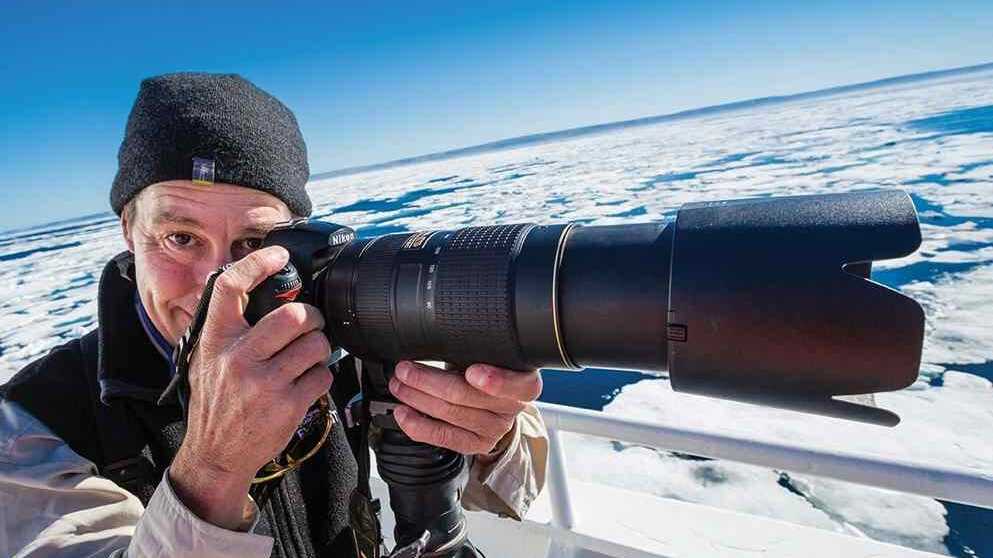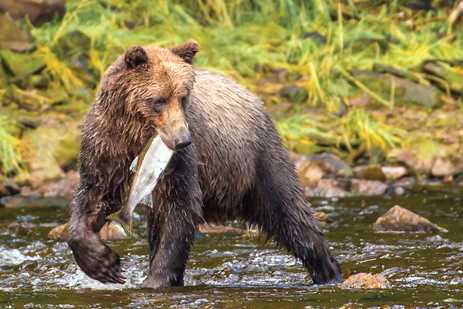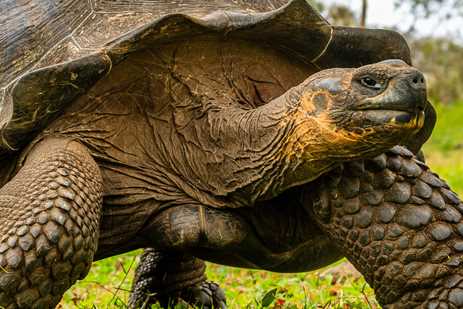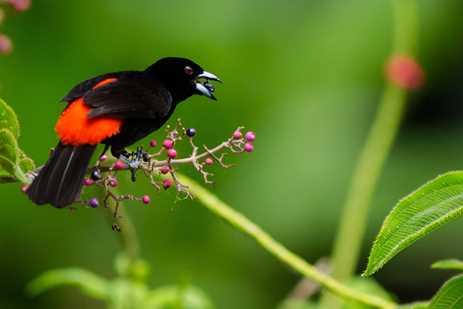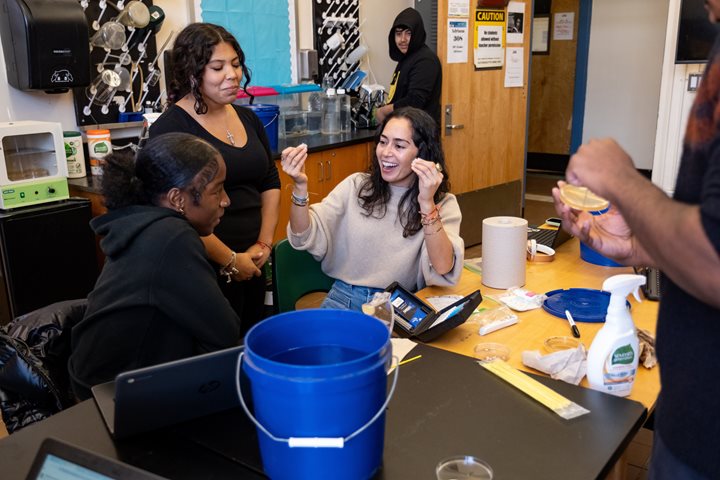“Expedition Photography brings travel and photography together in a way that really differentiates the Lindblad-National Geographic experience,” says National Geographic Photography Expert Rich Reid. After having been involved with the program for more than eight years, Reid was recently named Director of Expedition Photography. Here, he shares more about the benefits of this unique program, the career path that led him to our ships, and why smartphones have radically changed photography for the good. Get Inspired By Photos, Videos, Webinars, Stories, And Exclusive Offers. Sign Up
How did you get your start as a photographer?
Photography did not come naturally for me. It kind of fell in my lap in the mid-1980s when I managed a one hour photo lab. So I got to print a lot of bad photos. Eventually I became the photo editor for both the daily newspaper as well as the college yearbook at the University of California, Santa Barbara. There were a lot of professional photographers in Santa Barbara whose work I really admired. They inspired me to pick up the camera and start shooting and at the age of 19 I became a professional photojournalist.
Photo: Rich Reid
When did your connection with National Geographic begin?
I met the right editor at the right conference and became one of their stock photographers early on in my career. Eventually, I began taking assignments for National Geographic Adventure magazine in the mid-1990s, so I’m coming up on three decades with them. But it was in 2008 that I had the opportunity to fill in for somebody on a Lindblad Expeditions-National Geographic ship and that changed my course in life as well as my dedication to the art. To date, I’ve traveled on more than 100 expeditions all over the world, working with some of the most amazing individuals in this field.
How does the Expedition Photography program enhance our voyages?
Our Expedition Photography program is the cornerstone with our alliance with National Geographic, blending travel and photography. The places we visit are very special and photography really enhances your knowledge of a destination because it requires you to be curious. To capture a great image, you really want to understand what you're photographing and that's where our naturalists and our Lindblad Expeditions-National Geographic certified photo instructors (CPIs) come in. They can decipher natural behavior and cue you just in time to get that perfect shot, whether it's a breaching whale, a bird in flight, or a glacier on the verge of calving.
CPIs are aboard every single one of our trips on all of our ships, and on select ships in the fleet, guests are also joined by a National Geographic Photography Expert. These are some of the world’s top visual storytellers who travel at your side and at your service. Even if you’re the most neophyte photographer, they’re going to help take your work to that next level.
What are some other benefits of the program?
Expedition photography really differentiates us from other travel companies and we want to make sure our guests get the most out of it. We offer pre-trip photo webinars as well as a discount on photo gear at OM System to help prepare for your voyage. Select ships in our fleet are equipped with an OM System Gear Locker which is stocked with high quality gear that you can test out while you’re exploring.
Our ships are small and maneuverable and that allows us to get to destinations other companies can’t reach and to get up close to wildlife. We’re also very flexible with our schedule so we can stop and linger for a long time if we spot a pod of bubble-netting whales in Alaska or change course to witness an erupting volcano in Galápagos. This creates incredible opportunities for photography.
Do you have to be a skilled photographer to participate?
Not at all. The beauty of our expeditions is certainly the wide gamut of photo experience that people bring to the ship. Whether you're just an avid smartphone shooter or an advanced, serious photographer, everyone can gain something. We always start with a basic smartphone presentation and then on the longer voyages, we do follow-up smartphone presentations as well as evolve into more advanced photography.
On our designated photo expeditions, we go even deeper into multiple photo presentations, editing sessions, and hands-on workshops.
What is your favorite destination to photograph?
If I could choose to be anywhere on Earth, it's Alaska. My first expedition was to Southeast Alaska and this summer will mark my 30th continuous season working up there. I was a resident at one point. I owned a photo tour business and I would spend my summers running camping trips all over the state as well. I really consider it my first home.
You are a huge proponent of smartphone photography. Tell us a bit more about that.
I was a late adopter to smartphone photography, but now that I see the power of this tool it has changed everything for me and it’s why I’m doing what I’m doing. Because it’s instantaneous I can quickly review our guests’ photos and teach them techniques right there on the spot, whether we're in a Zodiac or hiking in the forest. The learning curve has greatly improved and everybody can get exceptional photos and videos with the help of our instructors, our onboard presentations, and a little practice in the field. I often see guests come on board with little interest in photography, and leave completely enamored with taking photos because they realize how incredible these phones are.
Can you share some smartphone photography advice?
I highly recommend upgrading your phone every few years for the best trade-in value. This is a great investment for improved camera functionalities and better image and video quality. For Apple users, consider the Pro version models which have better battery life, more storage capacity, and an extra lens. September is the best time to upgrade when Apple releases their new products. Invest in a good protective case. I have had a lot of success with the Otterbox brand. Lastly, don’t forget to clean the front lens just like a regular camera, or else everything is going to look like a smudge filter. Treat it like a camera that makes calls not a phone that takes photos.
Read more about our Expedition Photography Program or send your questions to Rich Reid at photos@expeditions.com.

